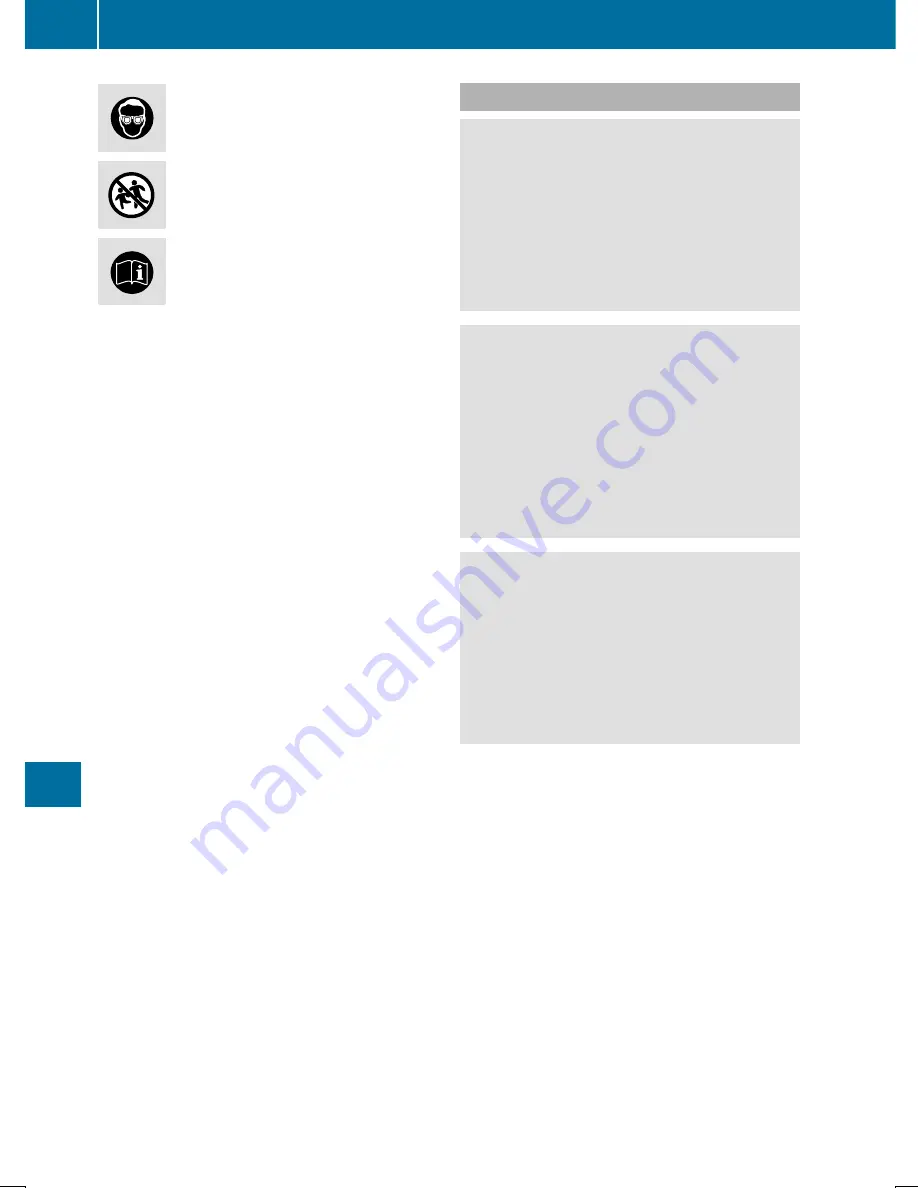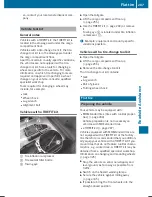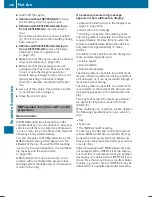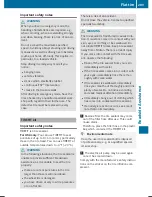
Wear eye protection.
Keep children away.
Observe this Operator's Manual.
For safety reasons, Mercedes-Benz recom-
mends that you only use batteries which have
been tested and approved for your vehicle by
Mercedes-Benz. These batteries provide
increased impact protection to prevent vehicle
occupants from suffering acid burns should
the battery be damaged in the event of an
accident.
In order for the battery to achieve the maxi-
mum possible service life, it must always be
sufficiently charged.
Like other batteries, the vehicle battery may
discharge over time if you do not use the vehi-
cle. In this case, have the battery disconnec-
ted at a qualified specialist workshop. You can
also charge the battery with a charger recom-
mended by Mercedes-Benz. Contact a quali-
fied specialist workshop for further informa-
tion.
Have the battery condition of charge checked
more frequently if you use the vehicle mainly
for short trips or if you leave it standing idle
for a lengthy period. Consult a qualified spe-
cialist workshop if you wish to leave your vehi-
cle parked for a long period of time.
Only replace a battery with a battery that has
been recommended by Mercedes-Benz.
Remove the SmartKey if you park the vehicle
and do not require any electrical consumers.
The vehicle will then use very little energy,
thus conserving battery power.
If the power supply has been interrupted, e.g.
if you reconnect the battery, you will have to:
R
set the clock using the multimedia system
(see the Digital Operator's Manual)
R
reset the function for folding the exterior
mirrors in/out automatically, by folding the
mirrors out once (
Y
page 99)
Charging the battery
G
WARNING
During charging and jump-starting, explosive
gases can escape from the battery. There is
a risk of an explosion.
Particularly avoid fire, open flames, creating
sparks and smoking. Ensure there is suffi-
cient ventilation while charging and jump-
starting. Do not lean over a battery.
G
WARNING
Battery acid is caustic. There is a risk of
injury.
Avoid contact with skin, eyes or clothing. Do
not inhale any battery gases. Do not lean
over the battery. Keep children away from
batteries. Wash away battery acid immedi-
ately with plenty of clean water and seek
medical attention.
G
WARNING
A discharged battery can freeze at tempera-
tures below freezing point. When jump-start-
ing the vehicle or charging the battery,
gases can escape from the battery. There is
a risk of an explosion.
Allow the frozen battery to thaw out before
charging it or jump-starting.
!
Only use battery chargers with a maximum
charging voltage of 14.8 V.
!
Only charge the battery using the jump-
starting connection point.
The jump-starting connection point is in the
engine compartment (
Y
page 295).
X
Open the hood.
X
Connect the battery charger to the positive
terminal and ground point in the same order
as when connecting the donor battery in the
jump-starting procedure (
Y
page 295).
If the indicator/warning lamps do not light up
in the instrument cluster at low temperatures,
it is very likely that the discharged battery has
frozen. In this case you may neither jump-start
the vehicle nor charge the battery. The service
life of a thawed-out battery may be shorter.
The starting characteristics can be impaired,
294
Battery (vehicle)
Road
side
Assistance
















































